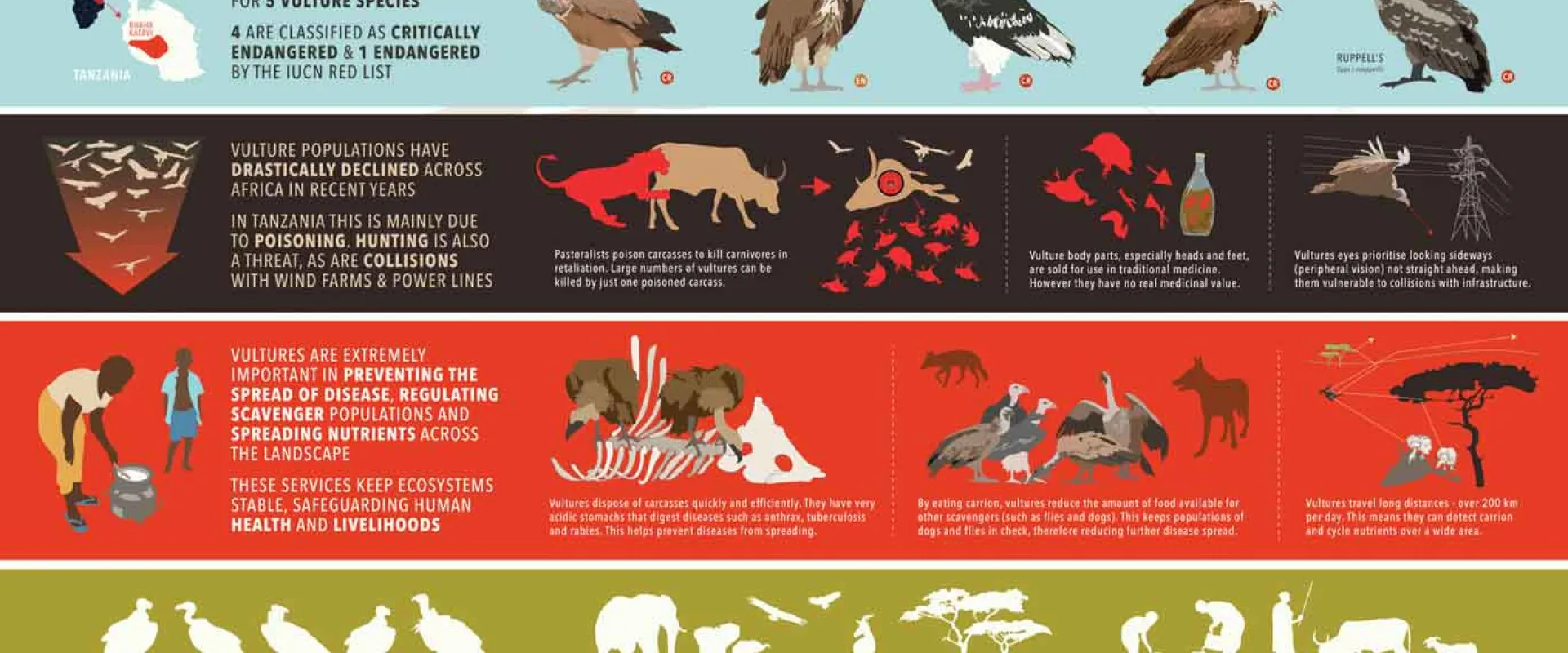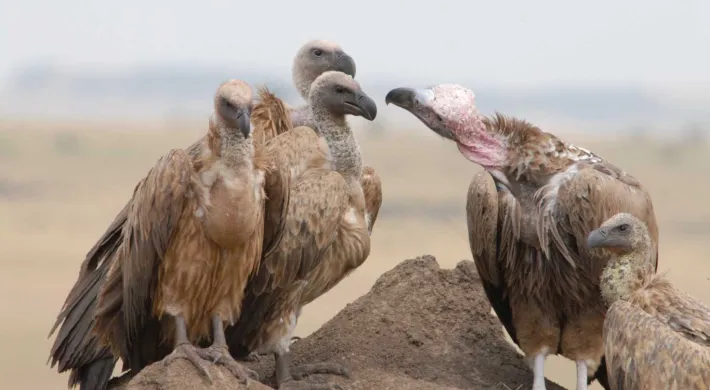By Claire Bracebridge, Tanzanian Vulture Program Manager for the North Carolina Zoo
I am sitting in the peace of a bush camp in one of the national parks in southern Tanzania. I can hear a woodpecker tap tapping in a tree not far from my tent. A family of banded mongooses emerges from the grasses at the camp edge, brown fur with fine white stripes. They trot my way, one by one, small chirruping calls connecting one to the other. Sunbirds flit industriously between flowers in the nearby trees, and below me, ants collect fragments of peanuts I dropped in the sand. I am surrounded by life, each foraging, feeding, and surviving. And yet today, the skies were quiet—a noticeable lack of vultures.
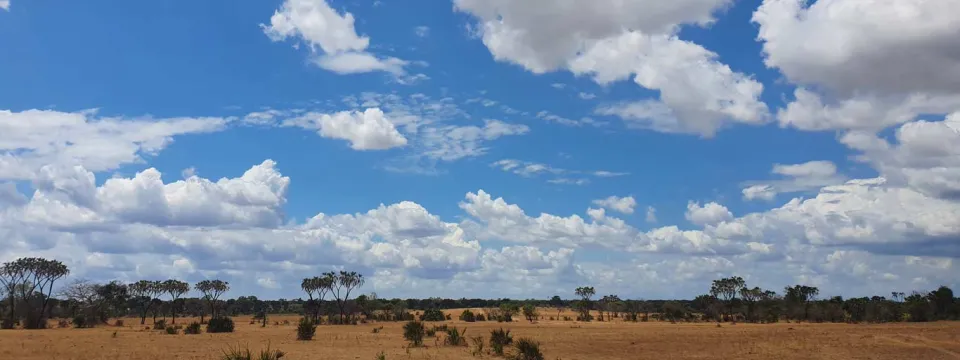
Above - a beautiful day in southern Tanzania, not a vulture in sight
Each year we conduct road surveys to count vultures in three key parks in southern Tanzania. Birds might be perched in a tree, sitting on a nest or most likely, small dark specks in a wide blue sky. It can be quite challenging to see the birds amongst the towering grey banks of clouds in the rainy season. But with practice, we manage to count and identify the specks, which, when magnified through binoculars, morph into White-backed vultures, lazily drifting upwards on a thermal 1km above my head. We have five endangered species of vultures that we record during these surveys (White-backed vultures, White-headed vultures, Hooded vultures, Lappet-faced vultures and Ruppell’s vultures).
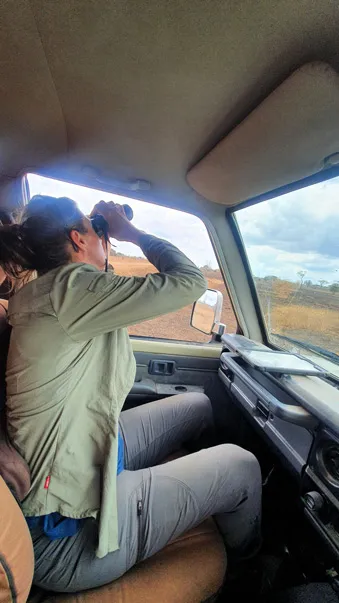
When we finish our surveys, we calculate how many individuals of each vulture species we see per 100km of road survey. This provides a measure of abundance – it’s not an absolute number of the vulture population; that’s basically impossible to do with birds that can fly 100s kms per day! But if we track these abundances across the years, it can give us an idea of population trends – are they stable, increasing or decreasing?
We have been doing this in southern Tanzania since 2013, and for the first five years, we found that the populations were generally stable, and southern Tanzania forms a stronghold for vultures in Africa. However, since 2018, we have seen declines, and we’re worried. Mortalities from the vultures we have fitted with satellite tags are telling us the same story, one of unfolding tragedy if it continues.
Observing and recording vulture movements
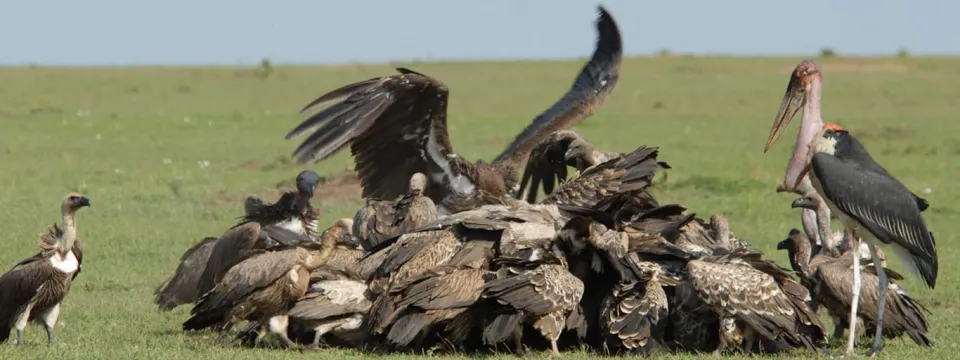
Above: a group of vultures is called a "wake" or "kettle" or "committee" depending on what they're doing....
The main reason is poisoning and using pesticides. This impact can be devastating, killing tens or even 100s of vultures at a time. Vultures are not always the intended victim; often, they are collateral damage from forms of predator control by cattle and sheep farmers who graze their livestock around the edges of parks where carnivores also live. This challenge is increasing over time.
Vultures are also vulnerable to local, traditional beliefs among the people. Recently, we have seen an increasing trend in removing vulture heads for folk medicine use. Vultures’ good eyesight is believed to represent visionary abilities and the gift of foresight, which can help with a person’s future success. This was sadly highlighted by two recent poisoning events in Kruger National Park, South Africa and near Chobe National Park, Botswana. One hundred fifty vultures were killed for traditional use, or ‘muthi’ as it is more commonly known in South Africa.
With various threats contributing to the vultures’ population demise, we need a united, cohesive and coordinated effort from the grassroots to the national level. To this end, North Carolina Zoo is supporting the Government of Tanzania in developing a national action plan for vultures, working with the Tanzania Wildlife Research Institute (TAWIRI) to provide a framework to guide and galvanize action amongst all stakeholders. And that is only the start; it will take dedication, passion, and tirelessness to reverse the current trends of vulture decline. On this year’s International Vulture Awareness Day, let’s recognize and celebrate nature’s unsung heroes, our very own spectacularly efficient vulture clean-up crew. We need them, and right now, they really need us.
